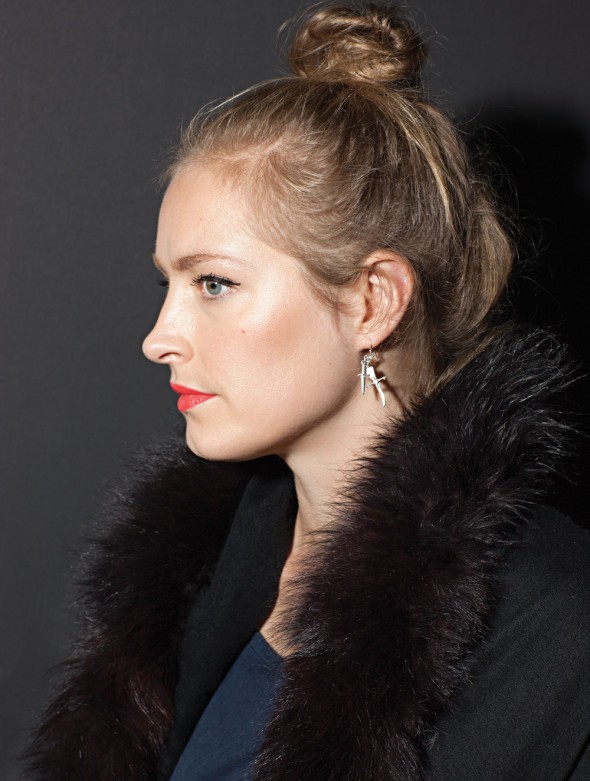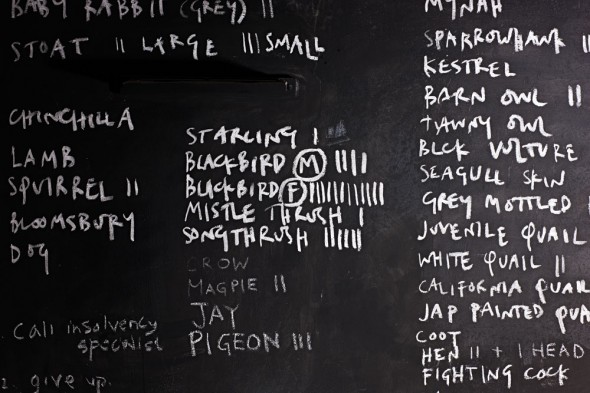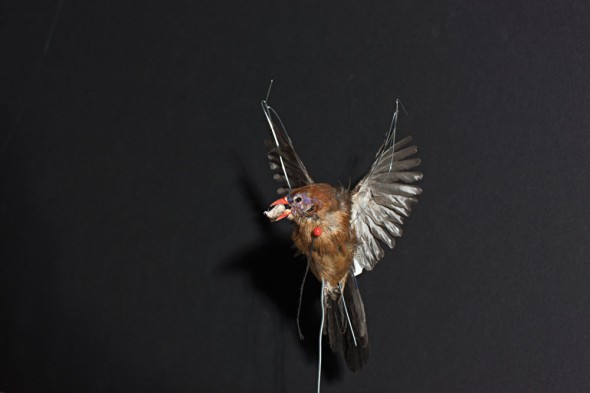A blurred line between morbid & magnificent

Dead finches lay strewn about an East London studio in a macabre amalgamation of feathers and skins and bottles of solutions. In Polly Morgan’s seemingly sordid world, death can be beautiful and taxidermy is an art form. Morgan is a master of this embalming method as art pieces and she has a milieu of taxidermied animals that she has fashioned to become modern art marvels.
Morgan’s career as an artist was serendipitous. She more fell into the craft than pursued it literally. She says, “It was more that I started doing art by way of animals, rather than making art out of animals.”
Her craft started when she was trying to furnish her flat and was unable to find any taxidermy that she liked. “I wanted animals that looked dead and everything out there looked like it had been resurrected. It occurred to me that it was something I could do myself,” says Morgan.

From her DIY taxidermy imaginings, Morgan started taking classes where her innate passion for taxidermy was conceptualized. She claims she never thought it would become a full-time gig but when she was commissioned to do four small taxidermy pieces for Bistrotheque, a fashionable restaurant and bar in London’s East End, she had to redefine what it meant to be a taxidermy artist.
“It forced me to form some sort of aesthetic and how I wanted my own work to look instead of just mimicking the actual habitat of the animal,” she says.
Morgan’s big break came at the Zoo Art Fair when her first piece—a white rat curled up, its fur overflowing from a champagne glass—was sold before the art fair even opened. “From the experience at Zoo I started to get a lot of attention in the art world in newspapers, and it kind of doubled from there and people started to become interested in what I was doing. I didn’t have any other pieces at that point, so I just had to start working as hard as I could,” she says.

Though the rat in a champagne glass could have many sordid connotations for any worthy art connoisseur, Morgan claims there was no surreal meaning behind the fur and glass, but rather, she wanted to experiment with shapes and elements.
However, this is not to say that her work has not reawakened her curiosity for nature and she admits that this has forced her to unravel ordinary associations of what an animal is to the outside world.
“I started to look at animals in a very different way,” she says. “I looked at animals I wouldn’t have looked twice at and started seeing them as beautiful. I wanted to put a rat in a champagne glass and I just wanted to make it look appealing in a way that rats aren’t appealing to people. I was thinking outside the associations of what a rat is.”
Morgan grew up around animals but never had a fond affinity towards them. When she was a child her house was littered with exotics, like llamas and ostriches, at any given moment, due to her entrepreneurial father’s decision to breed exotic livestock.
“I would see them everyday and I found them almost irritating because they were all eating into the time I would have with my parents. They got more attention than I got,” adds Morgan.
In the gruesomest of art forms, the pretty dewy skinned blonde’s East London flat might be seen as some sort of morbid butchering site. But for Morgan, the skinning of animals can sometimes be an overall calming experience, and she doesn’t so much see it as any different than working at a butcher.
“I worked in restaurants and kitchens and I grew up in the country so there is kind of a butchering side to it and it never really repulsed me. It’s part butchering and part sculpturing. If you have fresh stuff, it’s quite a pleasure to do.”
Morgan doesn’t see the animals she works with as creatures that once lived and breathed, but rather the way a painter looks at paint, as raw materials whose sole use is for the artist’s construction. Animals she knew in life she would never use in her work, as it would add a new, uncomfortable dimension she’s not ready to breach. Morgan says, “I have a pet dog and I definitely wouldn’t want to go near him with a scalpel when he is dead.”
What many would see as disturbing, Morgan finds compelling—creating pieces that are worth contemplation and transcend from life to death in an ethereal, dreamlike, almost fairytale artistic presence.
One of her most noteworthy pieces displayed at the Haunch of Venison Gallery monikered Carrion Call is a decaying coffin with clusters of chicks bursting out at the seams—their mouths gaping, calling to be fed.
“It was inspired by a rotten black bird I took a photo of with maggots. The maggots even though they repelled me, I actually thought were quite beautiful because dead animals have become a nesting site for new life. “The idea that vitality and life can be birthed out of the midst of decay has become a prevalent theme in Morgan’s work. She is inspired by all of the things around her and is stirred by reflections of everyday life in her work.”
“My last show was some large plumes that could look like it exists somewhere in the real world. I watch all sorts of nature films and am inspired by creatures of the deep that are in real life—you can’t believe they exist with the most amazing combination of colors and textures,” says Morgan.
With Morgan’s inspired work, she transports viewers into her fantastically surreal world where the line of death and life becomes blurred. She says, “I want the work to be uplifting and awe inspiring, and to inspire a sense of wonder in people.”
– Lena Vazifdar
Photography by Olivia Beasley
Hair & Makeup by Nikki Palmer at Mandy Coakley. Jewelery by Noemi Klein. Polly wears her own clothes.

